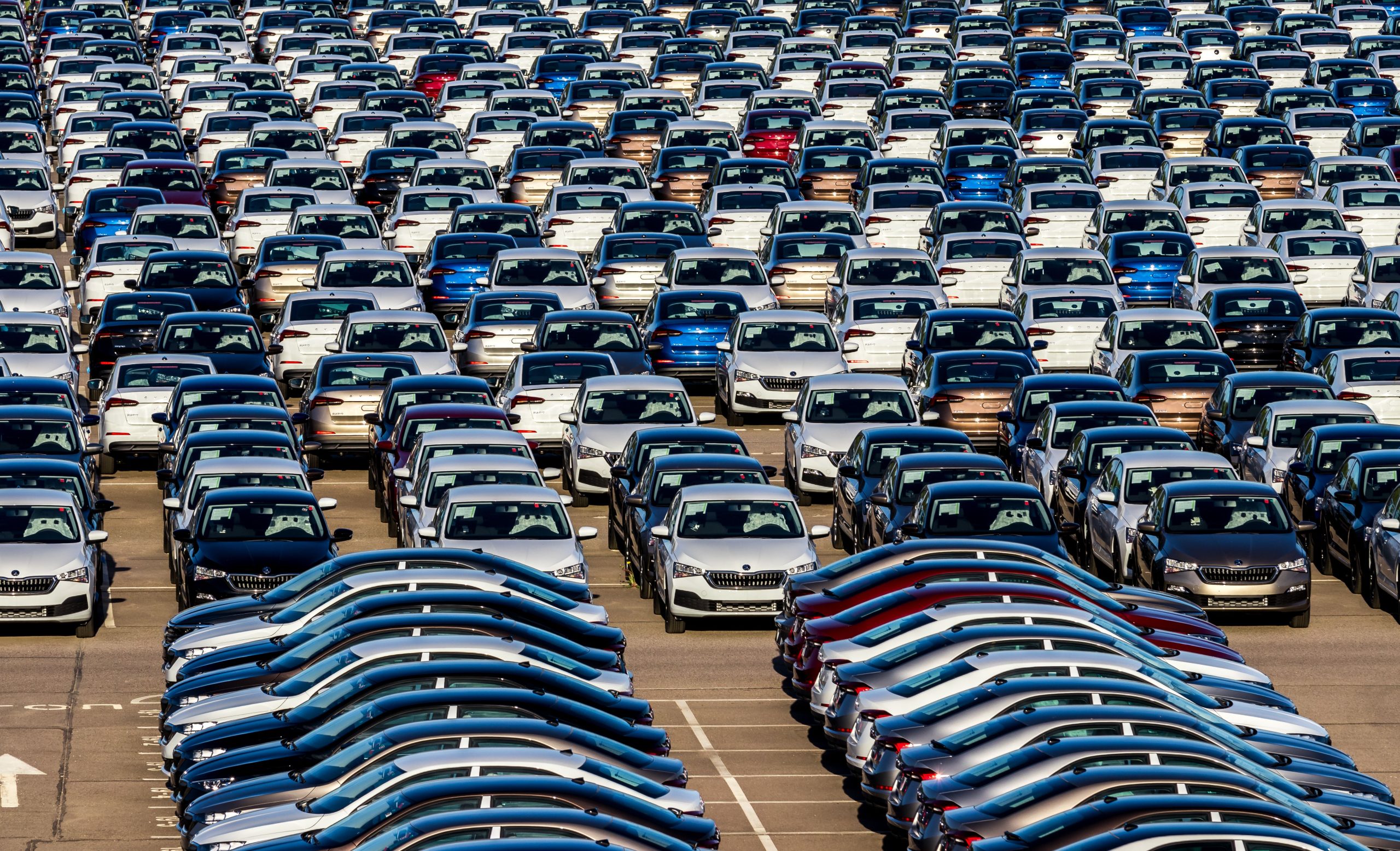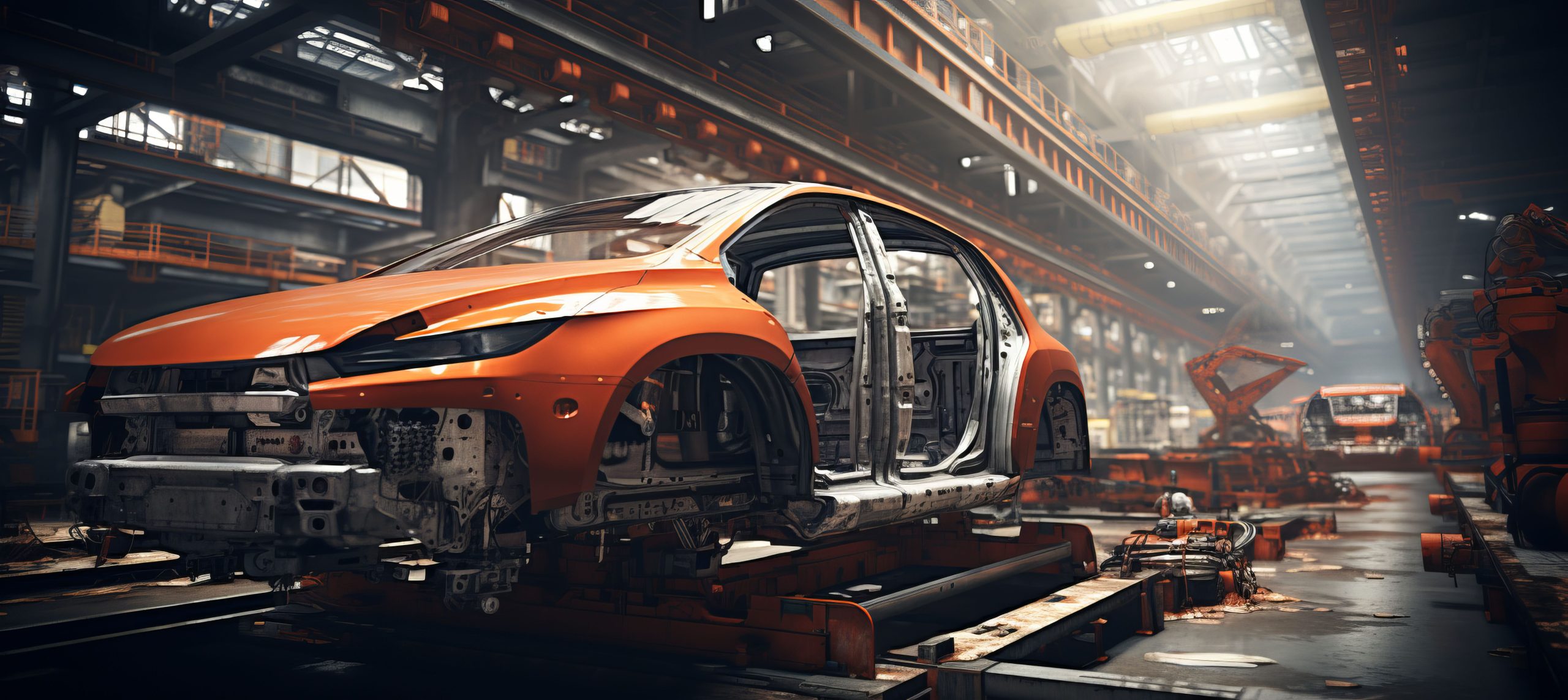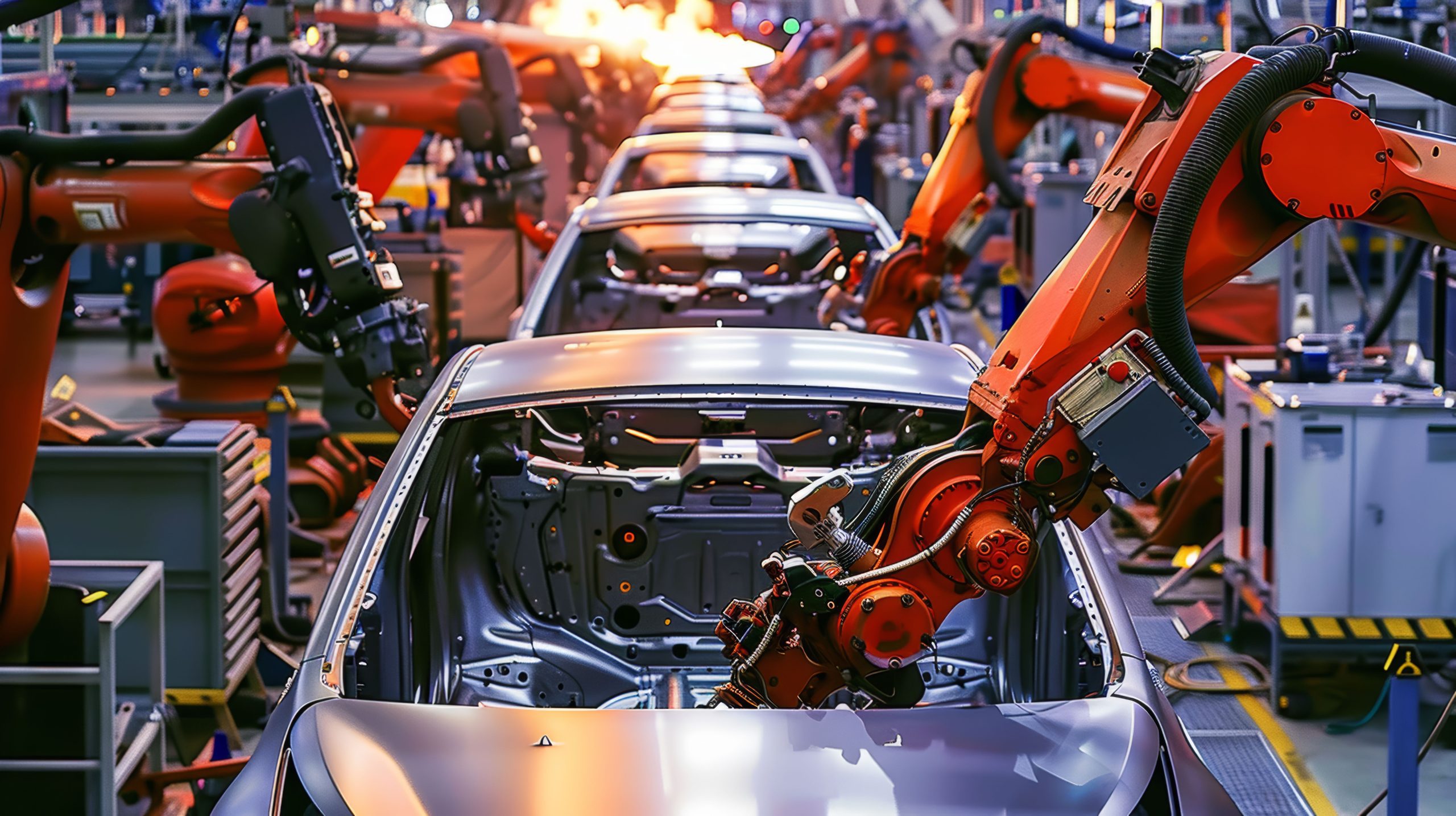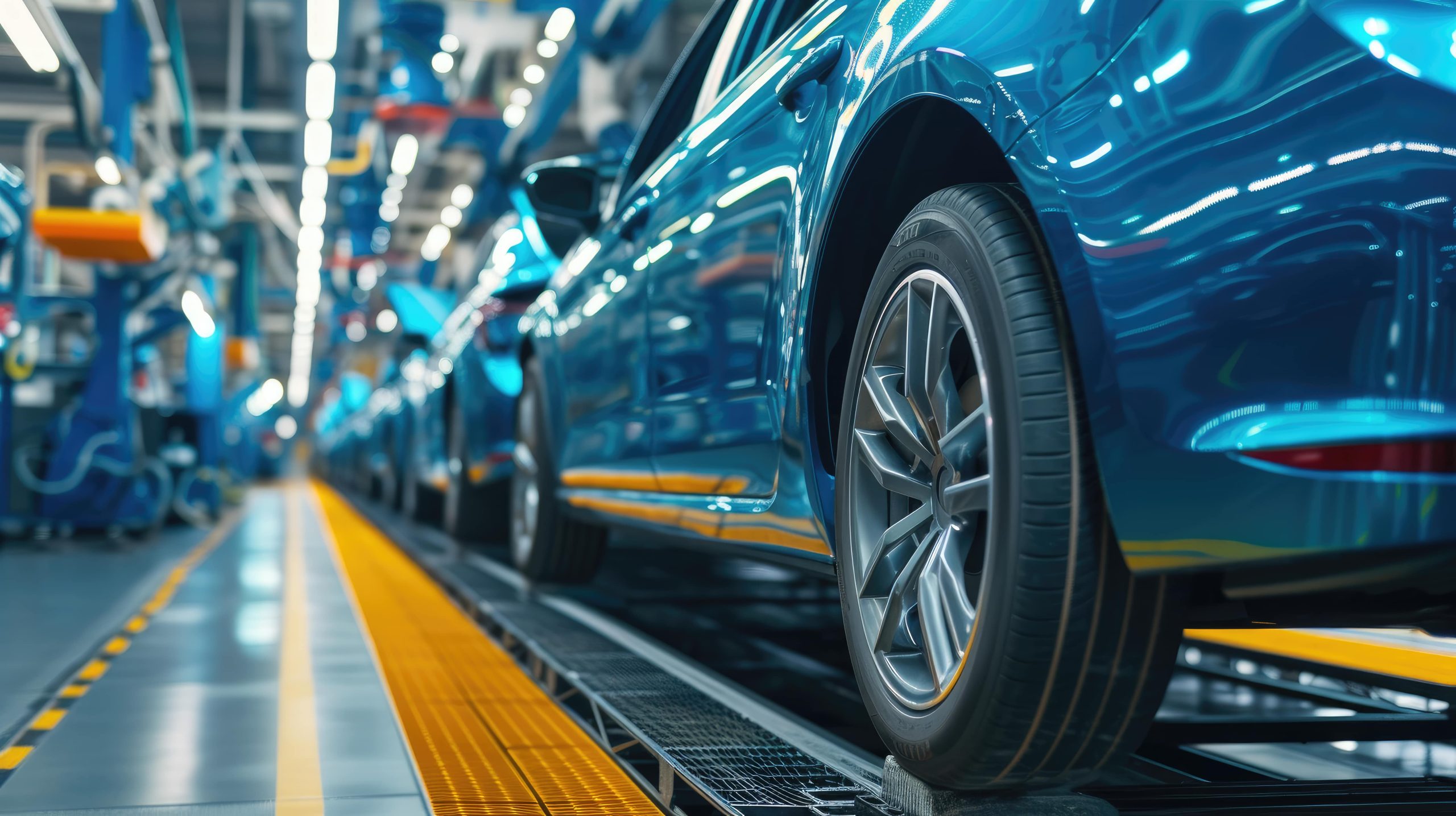Picture this: You’re strolling down the bustling streets of Amsterdam, and instead of the usual symphony of honking horns and revving engines, you hear… nothing. Well, almost nothing. Just the faint hum of electric vehicles (EVs) gliding by, like a scene straight out of a sci-fi movie.
Welcome to the new era of the European automotive industry, where EVs made up nearly 20% of all new car sales in Europe last year, and that number is only climbing. It’s an electrifying transformation, quite literally!
The automotive industry isn’t just a big deal in Europe; it’s colossal. We’re talking about an industry that employs millions, fuels economic growth, and, let’s be honest, contributes significantly to the continent’s charm.
From the iconic German autobahns to Italy’s winding coastal roads, cars are more than just transportation—they’re a cultural staple. Major players like Volkswagen, BMW, and Fiat have become household names, symbols of Europe’s innovative spirit and engineering prowess.
So, why are we diving into the gears and bolts of the European automotive scene? Because there’s a revolution underway, and it’s brimming with opportunities for savvy businesses looking to expand into Europe.
We’ll explore the latest trends driving this shift, the bumps in the road that lie ahead, and the golden opportunities waiting to be seized. Buckle up, because this journey through the evolution of the European automotive industry is about to get interesting!
Historical Context
Brief History of the European Automotive Industry
Let’s take a spin back in time to the late 19th century, when the European automotive industry was just revving up.
It all started with Karl Benz’s invention of the first true automobile in 1885—a three-wheeled, gas-powered contraption that would look more at home in a steampunk fantasy than on today’s roads.
But this humble beginning sparked a revolution, and by the early 20th century, Europe was racing ahead with innovations and production.
Key Milestones and Developments Over the Decades
The roaring ’20s brought us the glamour of the Bugatti Type 35, a car so sleek and fast it dominated Grand Prix racing. Fast forward to the ’50s and ’60s, and Europe was buzzing with post-war optimism and automotive creativity.
This era saw the birth of the iconic Volkswagen Beetle, a symbol of German ingenuity and reliability, and the sexy curves of the Jaguar E-Type, a British masterpiece that Enzo Ferrari himself called “the most beautiful car ever made.”
The ’70s and ’80s shifted gears towards efficiency and safety, with Volvo leading the charge in safety innovations and BMW redefining sporty luxury. The ’90s and 2000s embraced globalization, with brands like Fiat and Renault expanding their influence far beyond European borders.
The Legacy of Major European Automotive Brands
Ah, the legends of the road. Germany’s Volkswagen isn’t just the people’s car; it’s an empire. From the Golf to the Passat, VW has been a cornerstone of European motoring.
BMW, the Ultimate Driving Machine, has combined luxury with performance in a way that makes every drive feel like a joyride. And then there’s Mercedes-Benz, synonymous with class and cutting-edge technology, setting the standard for automotive excellence.
Italy gives us the heart-pounding thrill of Ferrari and Lamborghini, cars that turn heads and quicken pulses. Fiat, with its charmingly compact 500, brought style and affordability to the masses. Across the channel, the UK boasts of Rolls-Royce’s unparalleled luxury and Jaguar’s elegant ferocity.
Each of these brands has left an indelible mark on the industry, shaping not only the cars we drive but the very culture of driving itself. And as we steer into the future, their legacies continue to inspire the innovations of tomorrow.
Current Trends in the European Automotive Industry
The Rise of Electric Vehicles (EVs)
If you thought the electric revolution was limited to smartphones and kitchen appliances, think again. Electric vehicles (EVs) are zooming ahead in Europe, transforming the automotive landscape faster than you can say “zero emissions.”
Last year, EVs made up nearly 20% of all new car sales in Europe, a figure that’s as electrifying as the vehicles themselves.
Norway leads the charge, with EVs accounting for a whopping 54% of new car registrations—yes, more than half! Countries like Germany, the UK, and France are hot on Norway’s tailpipe, steadily ramping up their EV infrastructure and incentives.
Key Players in the European EV Market
The European EV market isn’t just buzzing; it’s a full-blown electric symphony, with big names and new players hitting all the right notes. Volkswagen, ever the people’s car, is spearheading its electric ID series, aiming to make EVs as common as bratwurst at a Berlin barbecue.
Tesla, the Californian disruptor, continues to make waves across the Atlantic with its Gigafactory in Berlin, proving that innovation knows no borders. Meanwhile, homegrown brands like BMW, with its i series, and Renault, with the popular Zoe, are electrifying Europe with style and efficiency.
Advances in Automotive Technology
But the future of driving isn’t just electric; it’s intelligent. Autonomous driving is no longer a sci-fi fantasy but an emerging reality. Companies like Mercedes-Benz and Audi are leading the pack with semi-autonomous features that can handle traffic jams and even park themselves. Full autonomy may still be a few years down the road, but the journey is well underway.
Connected cars and smart infrastructure are also steering us towards a more integrated driving experience. Imagine your car communicating with traffic lights to optimize your route or syncing with your smart home to adjust your thermostat as you head home. These advancements aren’t just cool—they’re making driving safer and more efficient.
Sustainability and Environmental Regulations
Europe isn’t just flirting with sustainability; it’s in a committed relationship. The European Union has set ambitious targets to reduce carbon emissions, pushing the automotive industry to go green or go home. Stricter emissions standards and hefty fines for non-compliance are forcing manufacturers to rethink their strategies and innovate.
This shift towards greener manufacturing processes is evident across the board. Brands are investing heavily in sustainable practices, from using recycled materials in production to developing more efficient, eco-friendly engines. Factories are becoming greener too, with renewable energy sources powering production lines and reducing the overall carbon footprint.
The impact of these EU policies is profound, driving the industry towards a cleaner, greener future. It’s a challenging road, but the destination is clear: a sustainable, eco-friendly automotive landscape where performance and environmental responsibility go hand in hand.
In this electrified, autonomous, and sustainable future, the European automotive industry is not just keeping up with the times—it’s leading the charge. For businesses looking to expand into this dynamic market, the opportunities are as vast as the Autobahn, with every twist and turn offering new possibilities.
Challenges Facing the Industry
Economic Challenges
Impact of Economic Fluctuations and Trade Policies
The road to automotive success in Europe isn’t without its potholes. Economic fluctuations can turn a smooth ride into a bumpy journey. Recessions, like unexpected speed bumps, can slow down car sales and disrupt supply chains.
Brexit, for example, threw a wrench in the works, causing uncertainty and reshaping trade dynamics. Tariffs and trade policies can further complicate the drive, making it crucial for businesses to stay agile and prepared for economic shifts.
Competition from Non-European Manufacturers
While Europe boasts some of the world’s most iconic automotive brands, the competition is heating up like an engine on a summer’s day. Non-European manufacturers, particularly from Asia, are revving their engines and making significant inroads into the market.
Brands like Toyota and Hyundai are not just parked on the sidelines; they’re aggressively competing with homegrown giants. This fierce competition demands innovation and resilience from European manufacturers to maintain their pole position.
Technological Challenges
Keeping Pace with Rapid Technological Advancements
In the fast lane of automotive technology, standing still means falling behind. Rapid advancements in EV technology, autonomous driving, and connectivity are reshaping the industry at breakneck speed. For manufacturers, keeping pace with these innovations is a high-stakes race.
Falling behind means losing market share to more technologically savvy competitors. This constant need for innovation requires substantial investment in research and development, and a forward-thinking approach to design and production.
Integration of New Technologies in Traditional Manufacturing
Introducing new technologies into traditional manufacturing processes is akin to merging onto a busy freeway. It requires precision, timing, and coordination.
The integration of advanced technologies, such as AI and machine learning in production lines, can streamline operations but also presents significant challenges. Legacy systems often need to be overhauled, staff must be retrained, and the transition can be both time-consuming and costly.
Yet, for those who navigate this integration successfully, the rewards are immense, leading to more efficient production and higher-quality vehicles.
Regulatory Challenges
Navigating Complex EU Regulations
Driving in Europe means navigating a complex web of regulations that can feel more convoluted than a labyrinthine old city. EU regulations on safety, emissions, and trade are stringent and ever-evolving.
Compliance is non-negotiable, and the costs of non-compliance can be steep, from hefty fines to reputational damage. For businesses expanding into Europe, understanding and adhering to these regulations is a critical, albeit daunting, task.
Compliance with Environmental Standards
The EU’s environmental standards are among the strictest in the world, reflecting the continent’s commitment to sustainability. While these regulations push the industry towards a greener future, they also present significant challenges.
Manufacturers must invest in cleaner technologies and adopt more sustainable practices, often at considerable expense. Meeting these standards requires a delicate balance between innovation and cost-effectiveness, and for many, it’s a tightrope walk.
Despite these challenges, the European automotive industry remains a dynamic and lucrative market. For businesses planning to expand into Europe, understanding and addressing these hurdles is crucial. It’s a demanding journey, but with the right strategies, the rewards can be as exhilarating as the open road.
Opportunities for Expansion
Market Potential
Growth Projections for the European Automotive Market
Despite the challenges, the European automotive market is not just idling; it’s gearing up for significant growth. Projections indicate a steady increase in vehicle sales, especially in the EV segment, which is expected to dominate the market by 2030.
The shift towards sustainability and innovation is creating a fertile ground for new entrants. Businesses that can offer cutting-edge technology, eco-friendly solutions, or unique value propositions will find a market eager to embrace them.
Key Regions Within Europe with High Demand
Europe is a diverse continent with varying levels of demand across different regions. Northern Europe, with its progressive environmental policies and high disposable income, presents a particularly lucrative market for EVs and luxury vehicles. Countries like Germany, the UK, and the Netherlands are leading the charge in automotive innovation and adoption.
Southern and Eastern Europe, while traditionally slower to adopt new technologies, are rapidly catching up, offering significant growth potential as their economies expand and consumer preferences evolve.
Incentives and Support
Government Incentives for Automotive Businesses
Governments across Europe are rolling out the red carpet for automotive businesses, particularly those that align with sustainability goals. From generous subsidies for EV production to tax incentives for setting up manufacturing plants, the support is substantial.
For instance, Germany offers significant subsidies for EV buyers and manufacturers, while France provides tax breaks for companies investing in green technology. These incentives can significantly reduce the cost of expansion and make entry into the European market more attractive.
Support from Trade Associations and Industry Bodies
In addition to government incentives, trade associations and industry bodies offer a wealth of support. Organizations like the European Automobile Manufacturers’ Association (ACEA) provide valuable resources, networking opportunities, and advocacy on behalf of the industry.
These associations can help businesses navigate the regulatory landscape, connect with potential partners, and stay informed about market trends and opportunities.
Strategic Partnerships
Collaborations with Local Manufacturers and Tech Companies
Collaborating with local manufacturers and tech companies can provide a smoother entry into the European market. These partnerships can offer insights into local consumer preferences, regulatory requirements, and supply chain logistics.
Moreover, they can facilitate technology transfer, enabling businesses to leverage advanced European automotive technologies. For instance, partnerships between traditional car manufacturers and tech companies are driving innovations in autonomous driving and connected car technologies.
Opportunities for Joint Ventures and Mergers
Joint ventures and mergers present another avenue for expansion. By joining forces with established European players, businesses can quickly scale their operations, share risks, and capitalize on existing market presence.
This strategy can be particularly beneficial in the competitive EV market, where collaboration can accelerate the development and deployment of new technologies. Recent trends show an increasing number of cross-border mergers and joint ventures, reflecting the industry’s recognition of the benefits of collaboration.
In the dynamic landscape of the European automotive industry, the expansion opportunities are vast and varied. By understanding the market potential, leveraging incentives and support, and forming strategic partnerships, businesses can drive their way to success. Europe is ready for innovation and growth, and for those ready to seize the moment, the road ahead is promising and full of potential.
Practical Tips for Businesses
Understanding the European Market
Consumer Preferences and Market Trends
To make a splash in the European automotive market, understanding consumer preferences is key. European buyers tend to favor quality, reliability, and innovation. They’re increasingly eco-conscious, with a strong preference for sustainable and energy-efficient vehicles.
Urban areas see a higher demand for compact cars and EVs, while rural regions may lean towards larger, more versatile vehicles. Staying ahead of market trends, such as the growing popularity of shared mobility services and connected car technologies, can give your business a competitive edge.
Importance of Localizing Products and Marketing Strategies
Europe isn’t a one-size-fits-all market. Each country has its unique preferences, regulations, and cultural nuances. Localizing your products and marketing strategies to cater to these differences can significantly boost your chances of success.
For example, promoting the eco-friendly features of your vehicles might resonate more in Scandinavia, while highlighting performance and luxury could appeal to German or Italian consumers. Tailoring your message and product offerings to meet local tastes and expectations is crucial.
Building a Presence in Europe
Navigating the Regulatory Landscape
The European regulatory landscape can feel like a maze, but mastering it is essential. Ensure your vehicles meet EU safety and environmental standards, which are among the strictest in the world.
Familiarize yourself with the specific regulations in each target market, as they can vary significantly. Partnering with local legal experts and consultants can help you navigate this complex terrain, ensuring compliance and avoiding costly pitfalls.
Establishing a Physical Presence vs. Online Operations
Deciding whether to establish a physical presence or operate online is a critical choice. Setting up manufacturing plants or sales offices in Europe can provide a strong local presence, faster delivery times, and a closer connection to your customers. However, it also involves higher costs and logistical challenges.
On the other hand, an online operation can be more flexible and cost-effective, allowing you to reach a wider audience with less overhead. Assess your business model, target market, and resources to determine the best approach.
Leveraging Digital Transformation
Utilizing Digital Tools and Platforms for Market Entry
Digital transformation is not just a buzzword; it’s a powerful strategy for market entry. Utilize digital tools and platforms to streamline your operations, enhance customer engagement, and improve efficiency.
E-commerce platforms can simplify the sales process, while CRM systems can help manage customer relationships. Social media and digital marketing can amplify your brand’s reach, allowing you to connect with potential customers across Europe.
Importance of Data and Analytics in Decision-Making
In today’s data-driven world, leveraging analytics is crucial for making informed decisions. Data can provide valuable insights into consumer behavior, market trends, and operational performance.
Use analytics to identify your most profitable markets, optimize your supply chain, and tailor your marketing strategies. By harnessing the power of data, you can make smarter, more strategic decisions that drive growth and success in the European market.
Key Takeaways
We’ve taken a thrilling journey through the European automotive industry, tracing its historical roots and highlighting its current trends. We delved into the rise of electric vehicles (EVs) and cutting-edge automotive technology, from autonomous driving to connected cars.
We also navigated the challenges the industry faces, including economic fluctuations, technological advancements, and stringent regulatory landscapes. Along the way, we uncovered a treasure trove of expansion opportunities, from government incentives and strategic partnerships to the promise of digital transformation.
The European automotive industry is more than just a market; it’s a dynamic ecosystem brimming with potential for growth and innovation. The shift towards EVs and sustainable practices is transforming the landscape, creating new avenues for businesses to thrive.
Technological advancements are driving unprecedented changes, making cars smarter, safer, and more connected. Despite the challenges, the opportunities are vast and varied, offering a fertile ground for businesses ready to innovate and expand.
Now is the time for businesses to seize these opportunities. The European automotive market is poised for significant growth, and those who act proactively can position themselves at the forefront of this transformation. Explore the potential, understand the market, and take the necessary steps towards expansion.
Whether it’s leveraging government incentives, forming strategic partnerships, or embracing digital tools, there are numerous pathways to success. So, buckle up and get ready to accelerate your business into the future of the European automotive industry. The road ahead is filled with promise and potential—don’t miss your chance to be part of this exciting journey.










